Why Visit Now: Lisbon
There was a time when Lisbon was far from the spotlight. Smaller than its neighboring European capitals, the Portuguese city went under the radar for a while, with most tourists preferring the country’s balmy southern coast.
But things took a turn over the last decade, thanks to a series of renovation projects and a surge of creative and tech spaces, all of which have contributed to a new wave of visitors. Now, it seems everyone is raving about it. Digital nomads come and go (Lisbon has one of Europe’s largest nomad communities), but many have permanently moved here, drawn by the city’s laidback lifestyle and the unique blend of old and new.
Neglected industrial neighborhoods like Beato and Marvila have transformed into creative hubs full of art galleries and breweries, major tech events like Web Summit have set up their base here, and the culinary scene is booming with innovative restaurants like Canalha and emerging food festivals showing off the city’s growing pool of chefs. Whether you’re looking for food, art, or history, here are 10 things you should check out in Lisbon right now.
1. Learn Traditional Crafts from Portuguese Grandmas
 Lisbon's 'A Avó Veio Trabalhar' Grandmas weave stories and skills into their craft creations. [Photo: A Avó Veio Trabalhar]
Lisbon's 'A Avó Veio Trabalhar' Grandmas weave stories and skills into their craft creations. [Photo: A Avó Veio Trabalhar]From ceramicists to weavers, Portugal has long been a country of artisans.
These crafts have mostly been linked to small villages, but recently, they have resurfaced in the city thanks to a surge of creative workshops, especially around the Arroios neighborhood.
Places like A Avó Veio Trabalhar are shining a new light on these traditional crafts by inviting Portuguese grandmas to share their knowledge with the younger generations. In their workshops, you’ll learn a new craft (knitting, embroidery, you name it), but you’ll also hear their personal stories in the process, which makes this an experience to remember.
But it’s not just about old crafts. These grannies are launching new trends (they’ve been on Lisbon’s fashion week runaway, after all) and creating seasonal collections that include anything from crochet cushions to hand-painted pot holders.
2. Meet Lisbon’s Creative Crew
If you want to know what’s brewing in Lisbon’s art scene, then there’s an event you can’t miss. Launched in 2021, the Lisbon by Design is an annual fair that showcases a selection of the latest Portuguese design. The event takes place around May and includes an intimate trade show set inside a 19th-century palace, with pieces commissioned specifically for it. It’s your chance to meet the artists face to face.
Past participants have included the likes of Oficina Marques, who work with ceramics and wood (their studio in Bairro Alto is like a cabinet of curiosities), textile artist Vanessa Barragão, and Tosco Studio, which specializes in concrete pieces. Lisbon by Design is one of the many events helping promote the city's creative landscape, alongside Festival Emergente (focused on emerging music) and Lisbon Design Week, which gives you an inside look into Lisbon’s ateliers and showrooms.
Lisbon by Design: 2023 Edition.

The Mastery of Oficina Marques
An assemblage where each ceramic tile holds a story, etched in earthy contours. [Photo: Joana Taborda]

A deFio Rugs Creation
A tapestry where every weave is a narrative, a blend of tradition and modern design. [Photo: Joana Taborda]

Vanessa Barragão's vision
Vanessa Barragão's vision through LBD Sculptures at Analora Gallery: A woolen work echoing hope and an environmental ethos. [Photo: Joana Taborda]
3. Experience the Great Earthquake of 1755
On the 1st of November of 1755, Lisbon experienced a tragic earthquake. One that not only shook the city but also influenced the minds of European thinkers like Voltaire and Jean-Jacques Rousseau, leading to the Age of Enlightenment.
The impact of the earthquake, which also caused fires (many people were at church at the time) and a tsunami, devastated much of the city’s downtown. Indeed, most of what you see today dates from the 18th century.
Open in 2022, Quake, one of Lisbon’s latest museums (and Europe’s leading new tourist attraction), tries to recreate the event with a series of interactive exhibits. For about 2 hours, you can hop between rooms, where you’ll learn more about earthquakes and the state of the world before traveling back in time to a replica of medieval Lisbon, where a simulator of the Great Earthquake awaits.
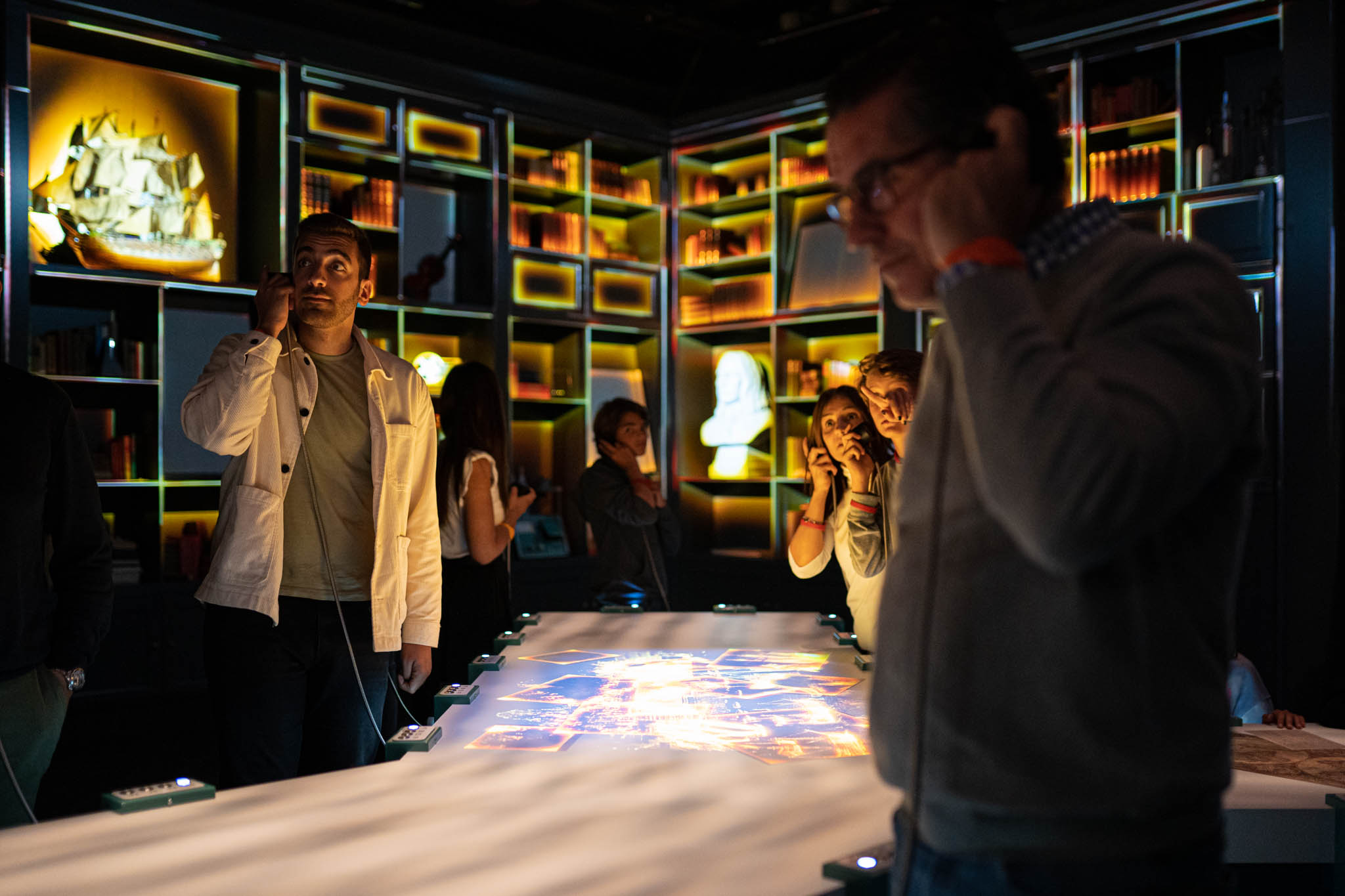 At Quake, experiencing the tremors of Lisbon's history with every sense. [Photo: Quake]
At Quake, experiencing the tremors of Lisbon's history with every sense. [Photo: Quake]The museum is a 10-minute walk from the Antiga Confeitaria de Belém, where you can sample the original recipe of pastéis de nata, Lisbon's iconic custard tart.
4. Shop for Traditional Portuguese Crafts
More than a souvenir shop, A Vida Portuguesa has become a chest of memories for the locals. Owner Catarina Portas researched old Portuguese brands (from Viarco’s pencils to Claus Porto’s soaps) and gathered them all under one roof. The first store emerged in the central district of Chiado, and the brand has since spread to the Mercado da Ribeira in Cais do Sodré and Largo do Intendente. While the original Chiado shop is in the process of closing due to Lisbon’s encroaching hotel industry, the other locations are still up and running. If you’re looking to add a Portuguese touch to your home, this is the place for it. You can source anything from handwoven blankets to ceramics and embroidered towels, all made in Portugal.
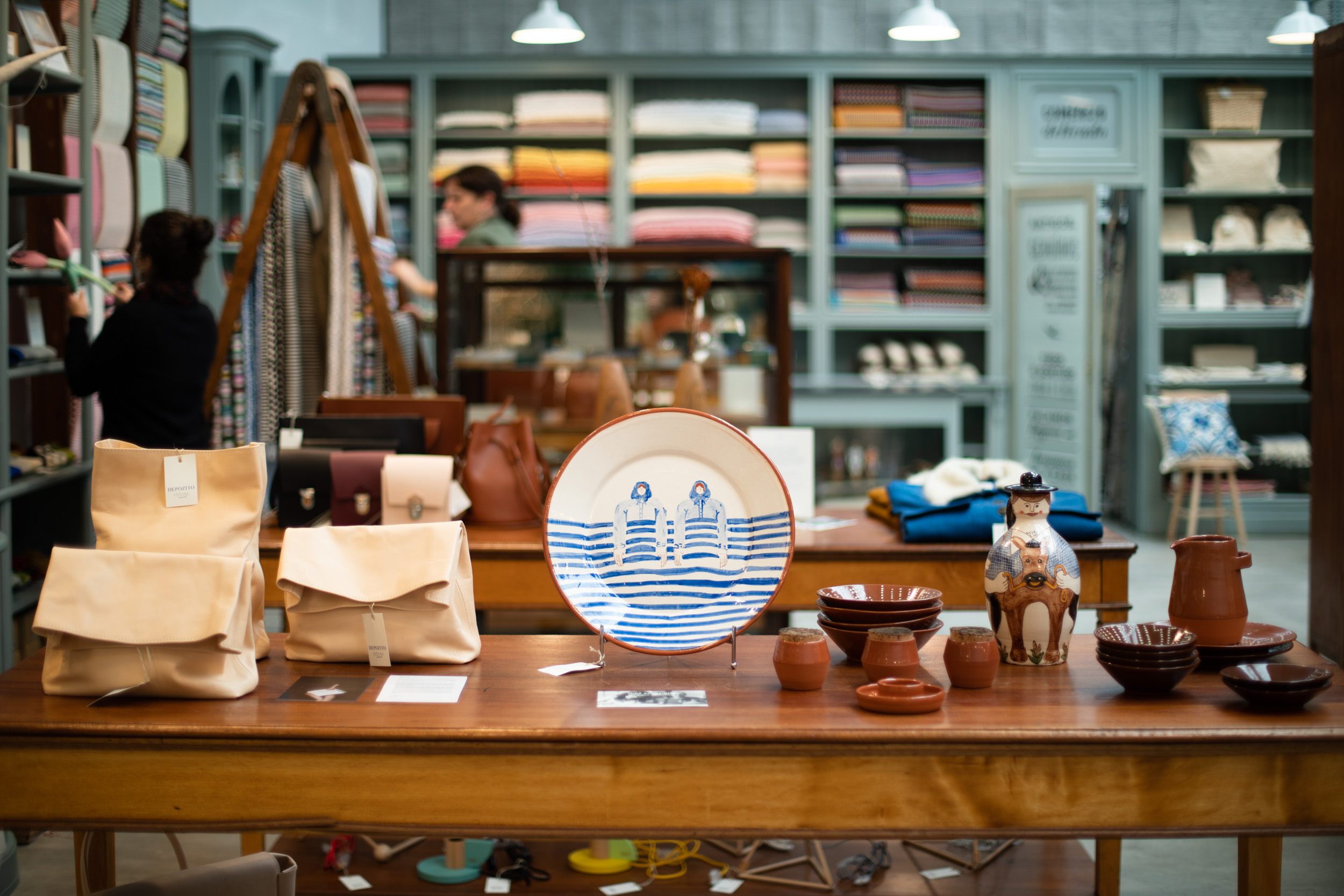
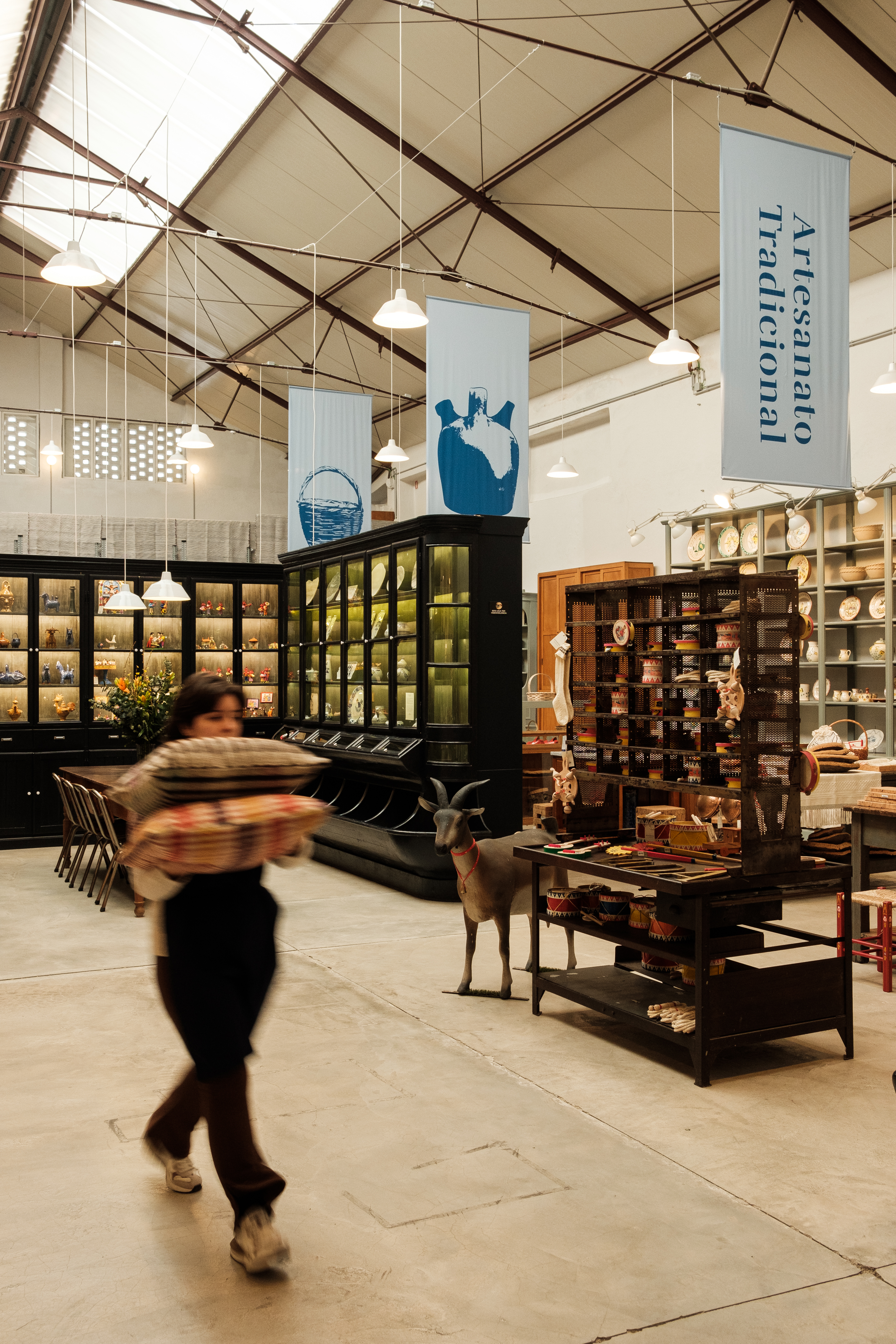
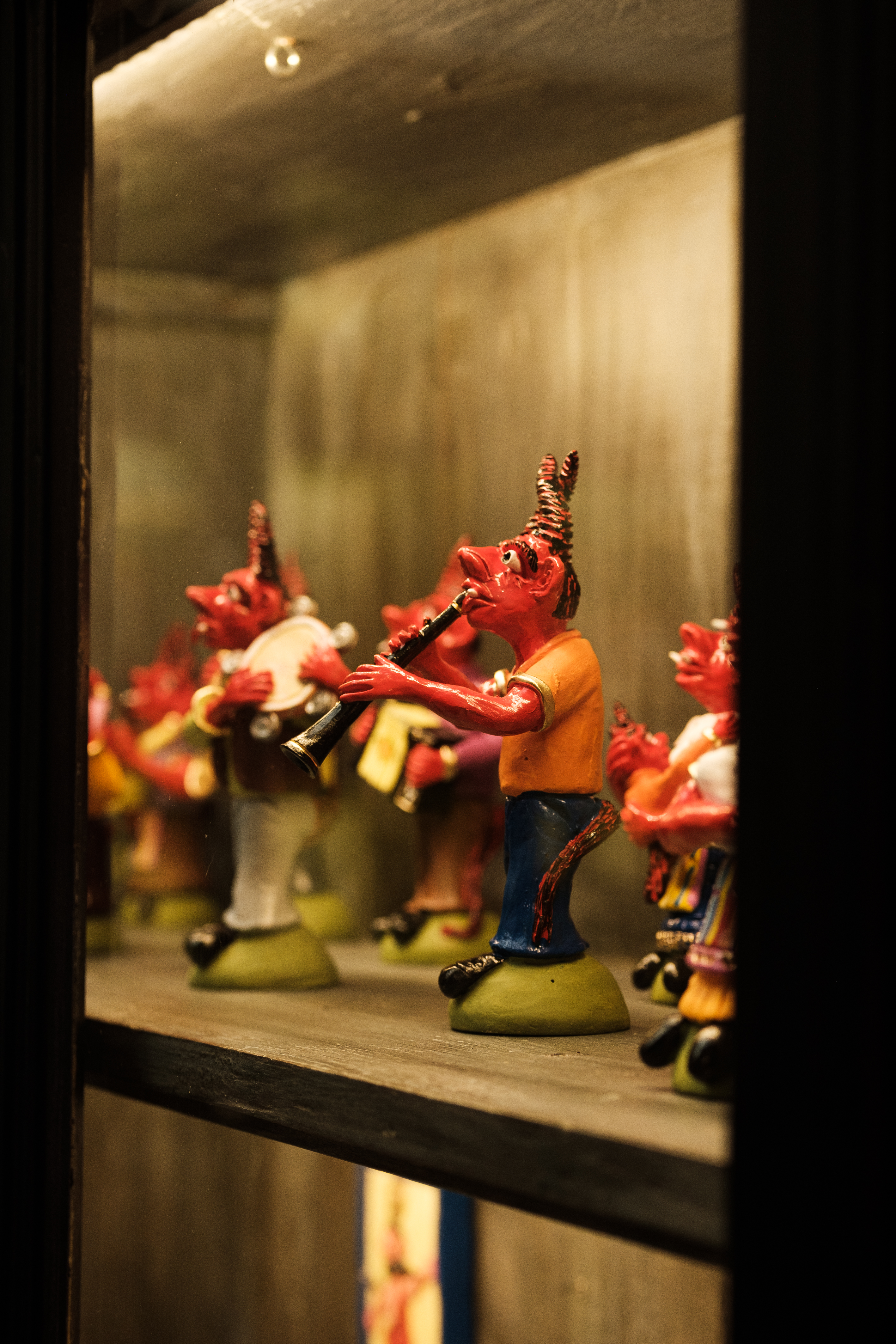
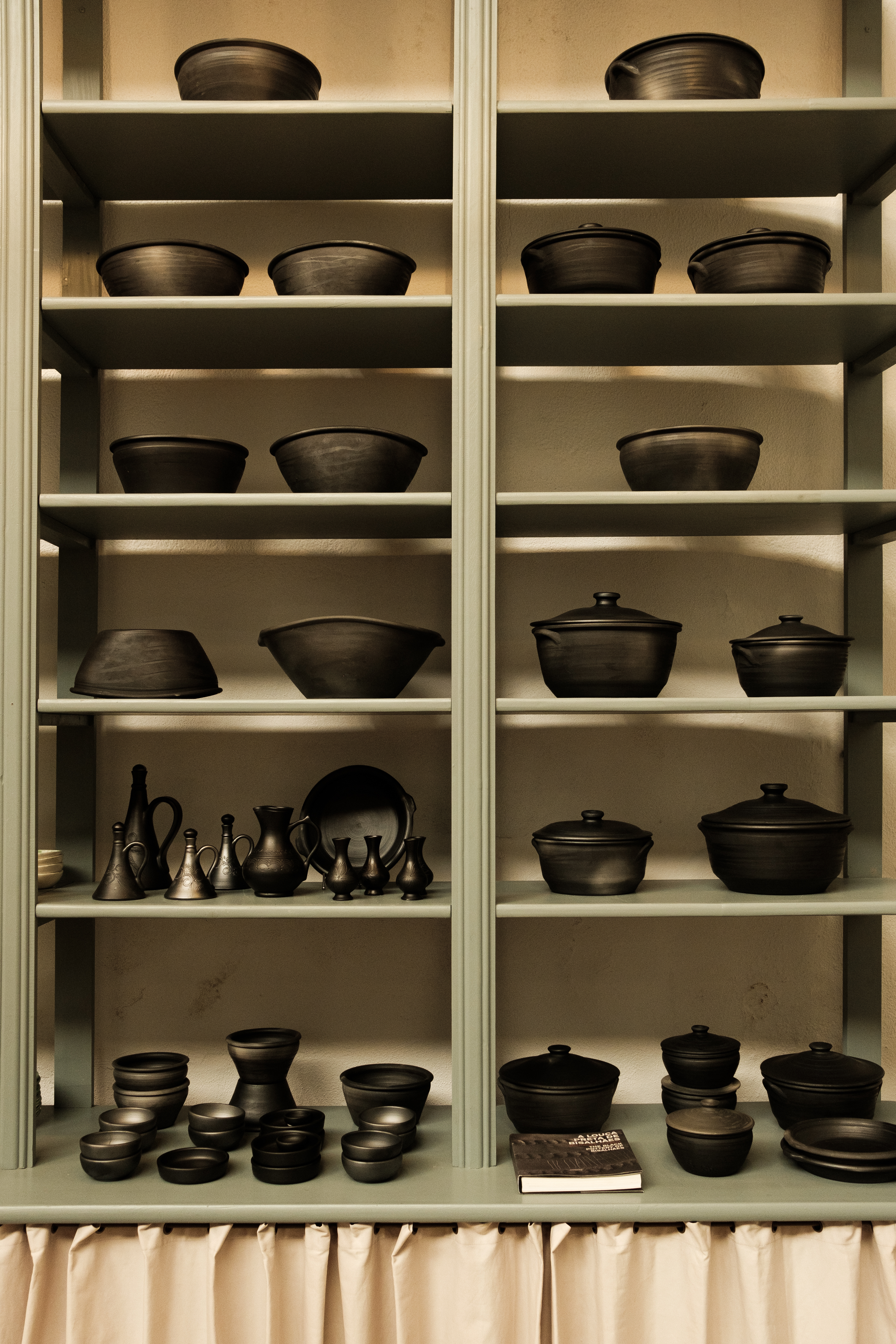
In 2021, A Vida Portuguesa partnered with Portugal Manual, a network of local artists and artisans, to showcase the country’s new generation of creatives. The Depozito store near Intendente was born out of this, a space where old craftsmanship meets new design.
5. Climb Up the 25 de Abril Bridge
At first sight, the Ponte 25 de Abril may look like a doppelgänger of the Golden Gate Bridge. But there are a few things that distinguish this Lisbon structure from its San Francisco counterpart. For one, the Ponte 25 de Abril is not walkable.
However, there are other ways to get a closer picture of it, like the Pilar 7. This panoramic elevator takes you to the top of one of the bridge’s pillars, giving you a great view of the Alcântara district. If you're not afraid of heights, you can walk along the glass platform and look down. Another way to take in the structure is to climb up the Escala 25, a 39-foot-tall bouldering wall attached to the pillar. Make a day of it by hitting up nearby LX Factory, a textile factory turned creative hub, or the outdoor food court Mirari.
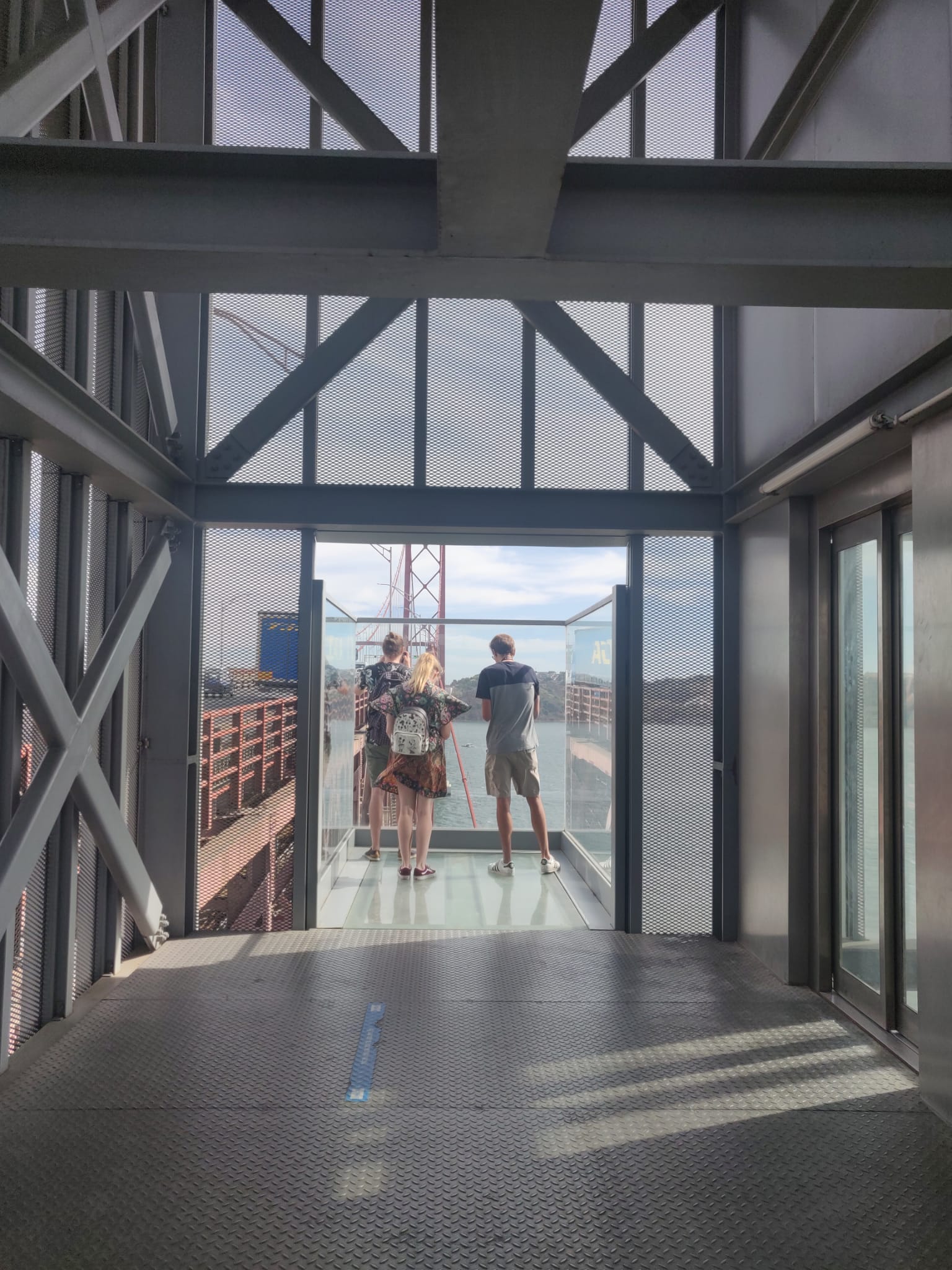
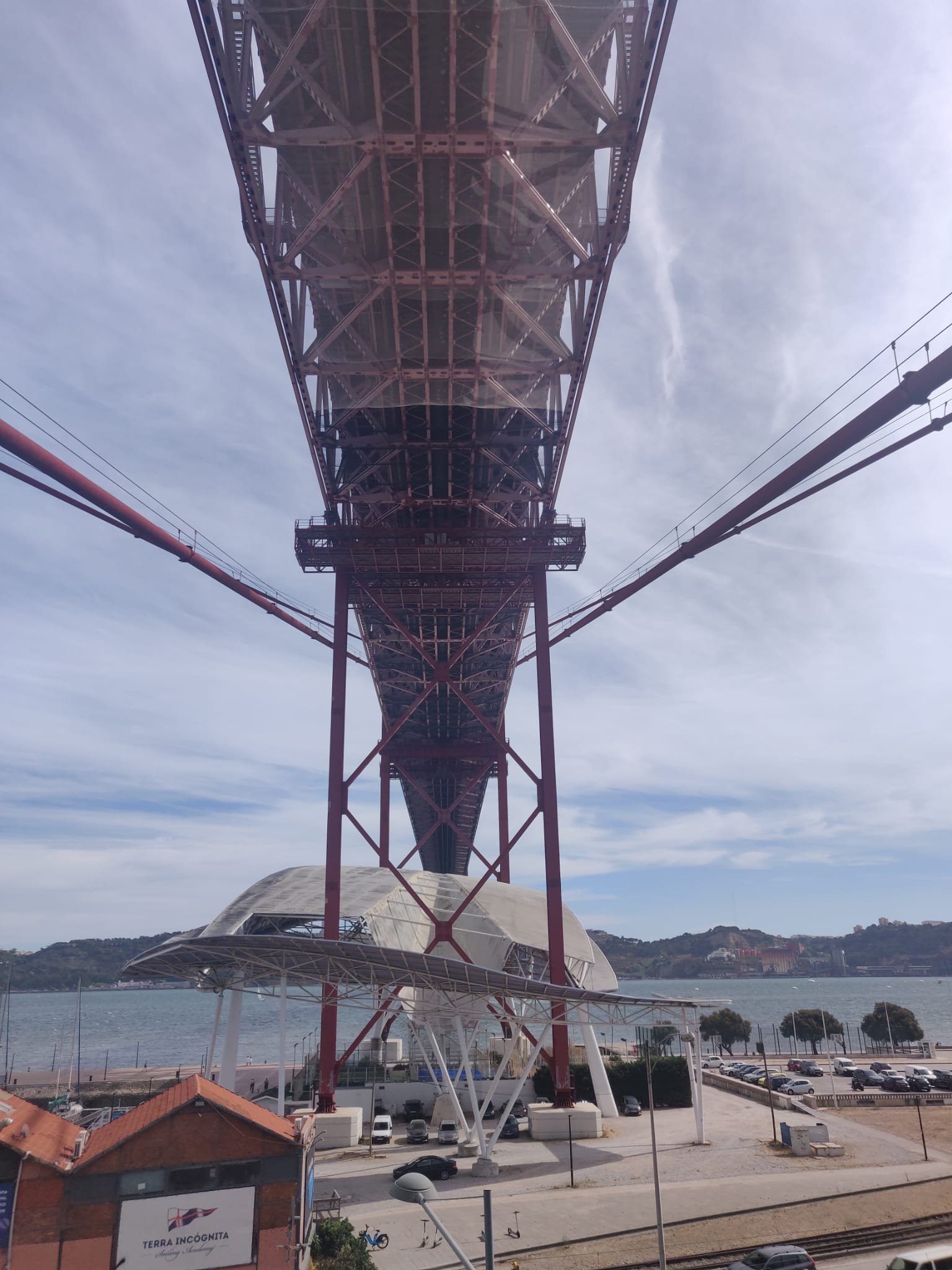
The bridge is also intrinsically connected to Portugal’s history. When it opened in 1966, it was named after Salazar, a Portuguese dictator who ruled the country for nearly 40 years. Once the regime fell in 1974, the bridge was renamed after the date of the revolution, the 25th of April.
6. Enjoy a Barbecue with Local Chefs
The Portuguese love a good barbecue, whether that’s a juicy chicken sold in churrascarias all year round (look for frango no churrasco) or the sardines thrown on a grill every summer. So why not have a festival dedicated to fire-cooked meals?
Enter Chefs on Fire, an annual event that invites local chefs to cook over a large fire pit. It all started in 2018 with a one-day feast. Now, it’s a three-day party where barbecued food and music take center stage. The main edition takes place around September in Cascais, a coastal town near Lisbon. But they’ve also done pop-ups across the country, so it’s worth keeping an eye on their socials to see what’s coming up. Pre-sale tickets for the 2024 Cascais edition are already available on their website.
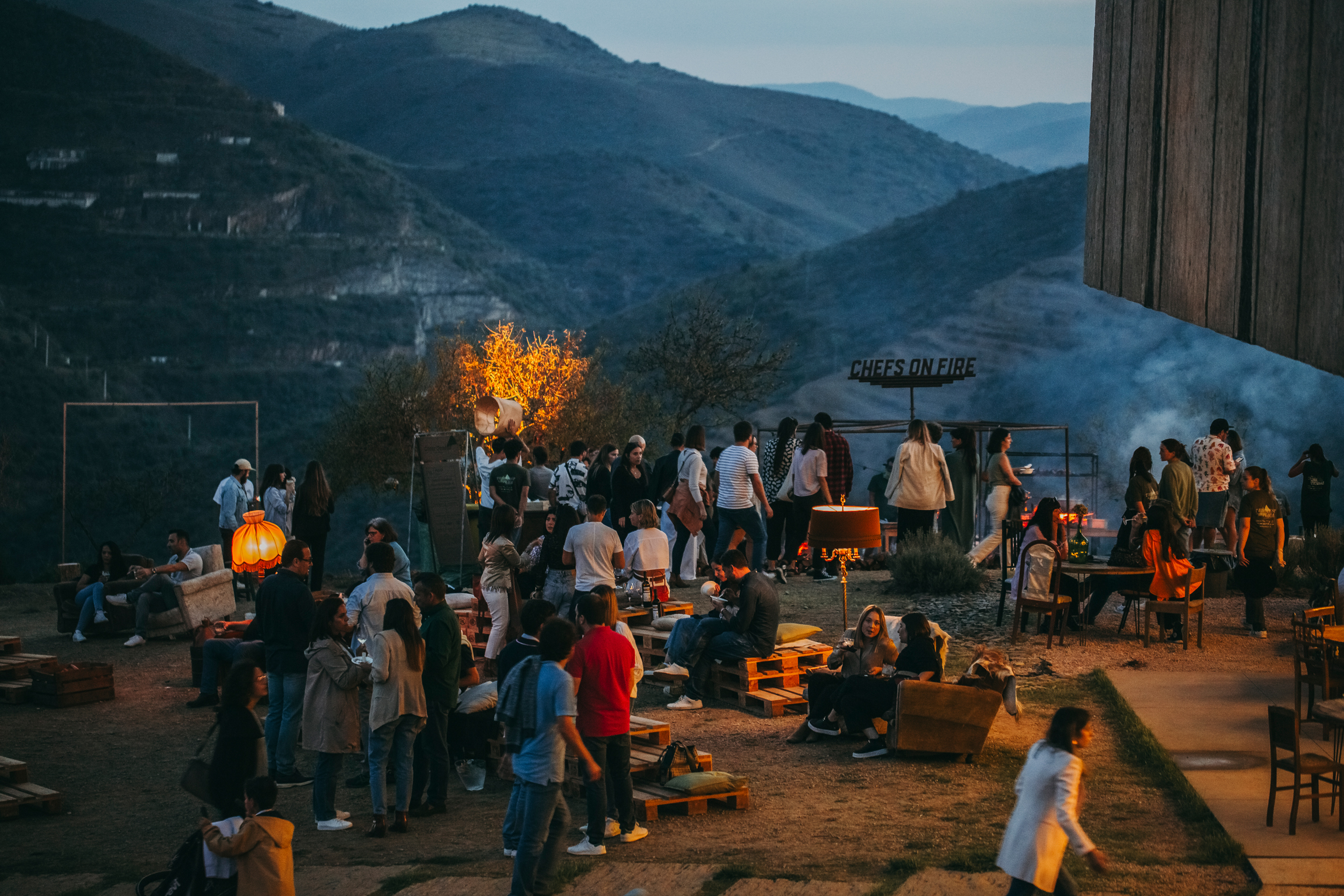
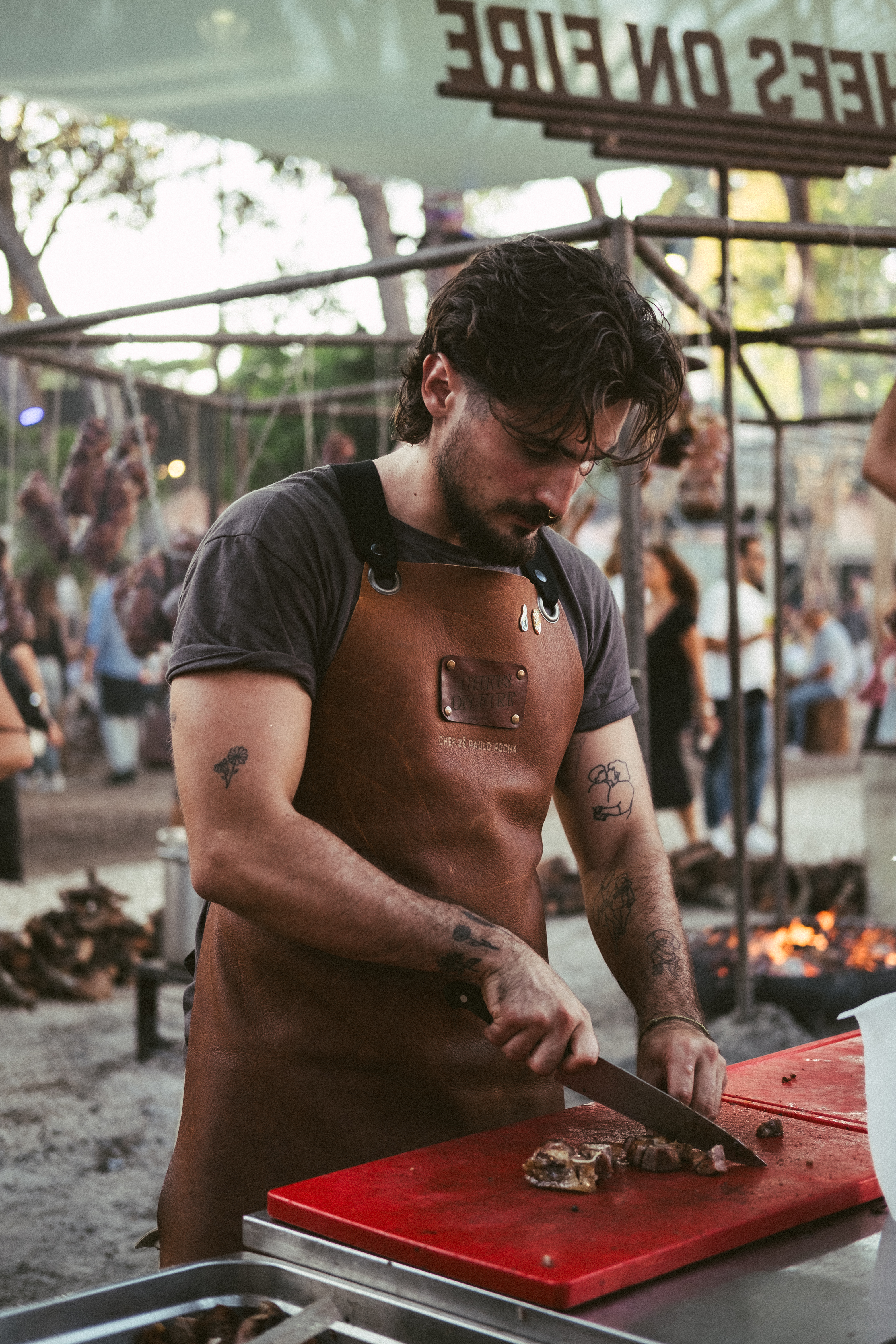
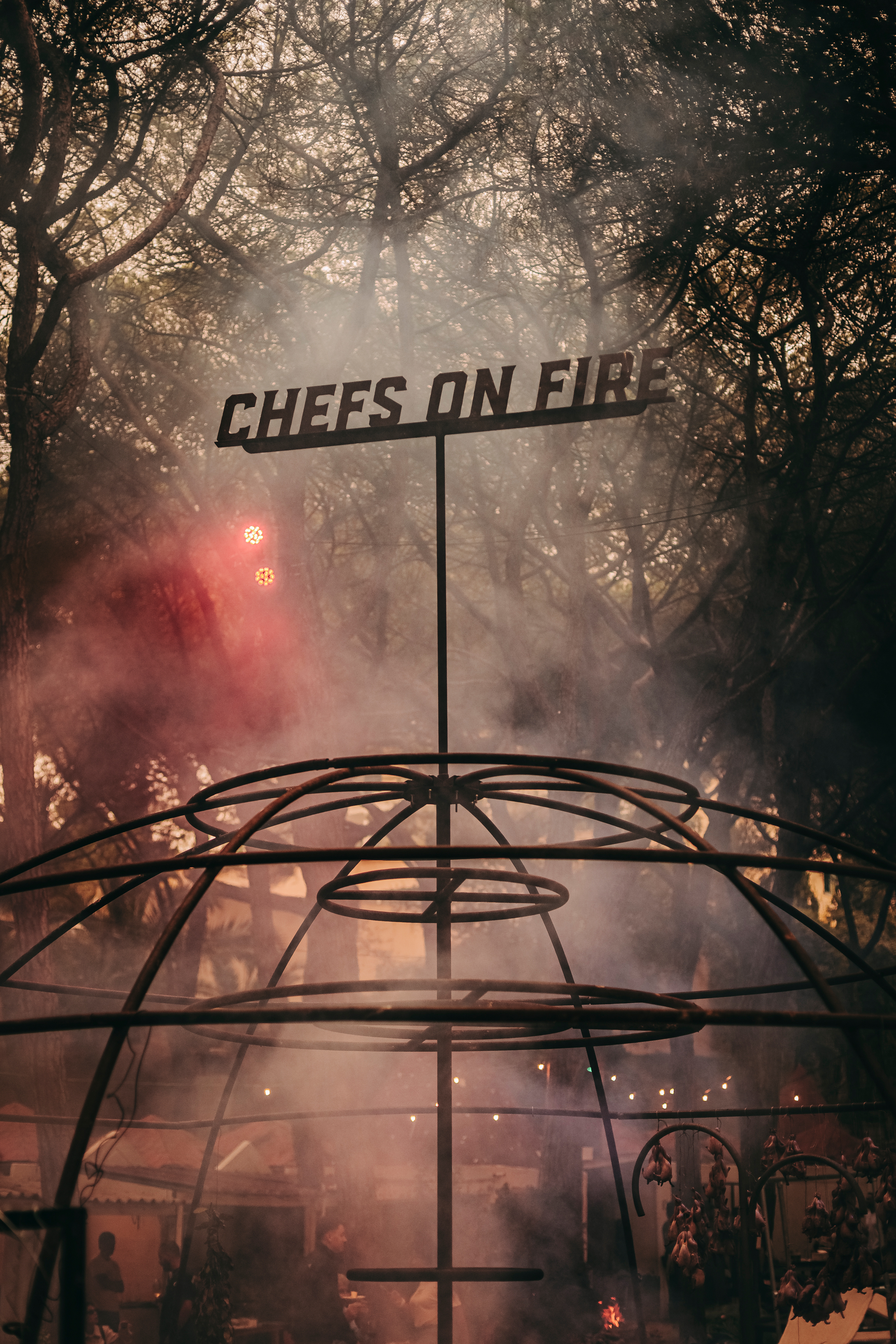
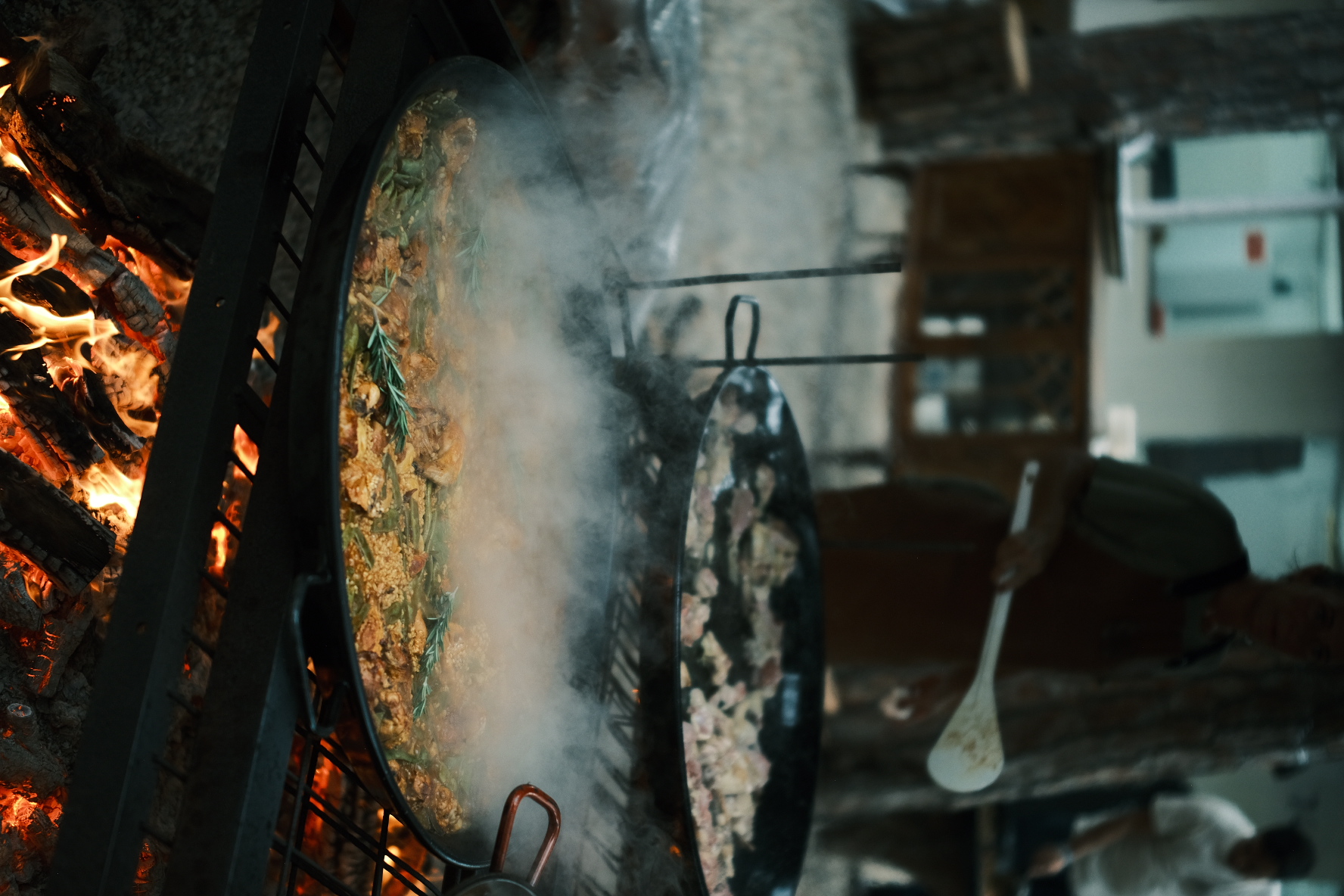
7 - Tour an Urban Winery
When you think of Portuguese wineries, you may picture the lush terraced vineyards of the Douro Valley near Porto or the flatlands of the Alentejo. But Lisbon also produces its own wine (just look at the region of Colares, which survived the phylloxera plague back in the 19th century). You don’t need to go that far to taste the region’s wine, though. In Belém, amid the Unesco Heritage sites like the Mosteiro dos Jerónimos, is an urban winery known as Adega Belém. Open since 2020, it is run by a couple who went from biology and anthropology into the wine world.
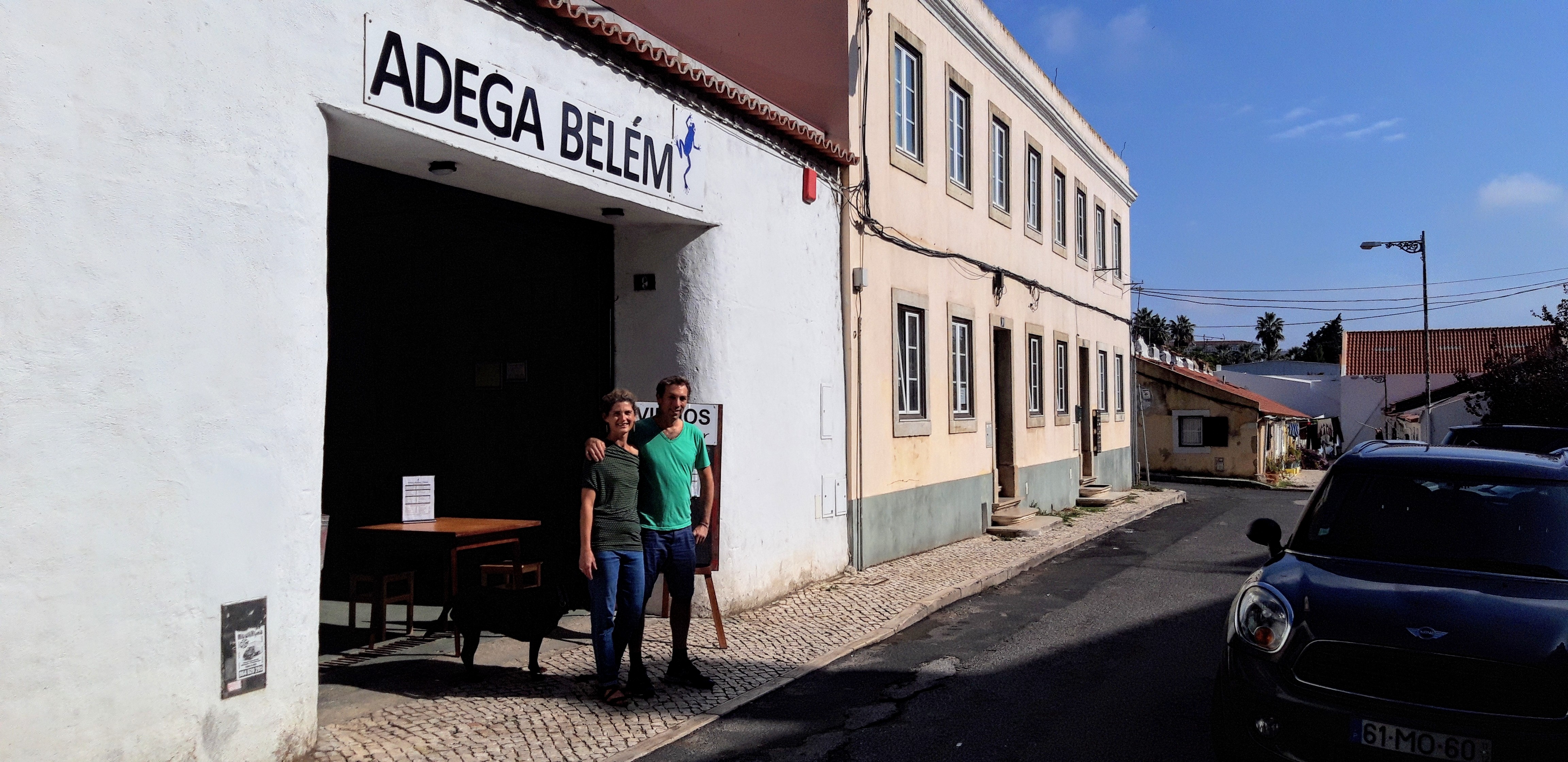 A winery in the middle of Lisbon. [Photo: Adega de Belém]
A winery in the middle of Lisbon. [Photo: Adega de Belém]Catarina and David source their grapes from three areas around Lisbon: the Caparide Valley, Ajuda, and Alenquer. Together with their family and friends, they harvest the grapes by hand and take them into the winery (set in an old car repair shop) to be processed, adding as little sulfites as possible. You can pop by for a tasting from Thursday to Saturday or call ahead to book a guided tour of their cellars. Tip: Stick around Belém for dinner and grab a fine dining meal at nearby Canalha, run by chef João Rodrigues.
8. See an Immersive Exhibition In an 18th Century Reservoir
Like hidden water temples, Lisbon’s reservoirs remain one of the city’s best-kept secrets. Once built to distribute water across the city, these underground spaces are now reinventing themselves as unique cultural sites. In the leafy square of Praça das Amoreiras, you’ll find the Reservatório da Mãe d’Água das Amoreiras. A stone arch leads you to the entrance of this 18th-century cistern designed by Hungarian architect Carlos Mardel.
Mornings are usually quiet, with only the sound of the waterfall running in the distance, but come in the afternoon, and you’ll be taken aback by the immersive multimedia shows, projecting images on the reservoir’s imposing columns (from Monet’s water lilies to Dali’s surrealist masterpieces). Before you leave, make sure to climb up to the rooftop for a panoramic city view.
Also worth visiting is the Reservatório da Patriarcal. Hidden under the Jardim do Príncipe Real, this 19th-century reservoir is now welcoming intimate fado concerts. The natural acoustic of the space makes this experience very different from your traditional fado house.
 An intimate fado performance nestled in a historic reservoir. [Photo: Real Fado]
An intimate fado performance nestled in a historic reservoir. [Photo: Real Fado]9. Sample Treats by Small Portuguese Producers
Part grocery store, part wine bar, Comida Independente aims to highlight small producers in Portugal and worldwide. Portuguese owner Rita Santos combed through every region in search of the country’s best products, from cheeses to smoked sausages and, of course, the wine. The result is in the store, which has been named one of the best gastronomy shops in the city. Every day, the staff makes up a snack with their latest finds to pair with the growing wine selection, which includes natural wines.
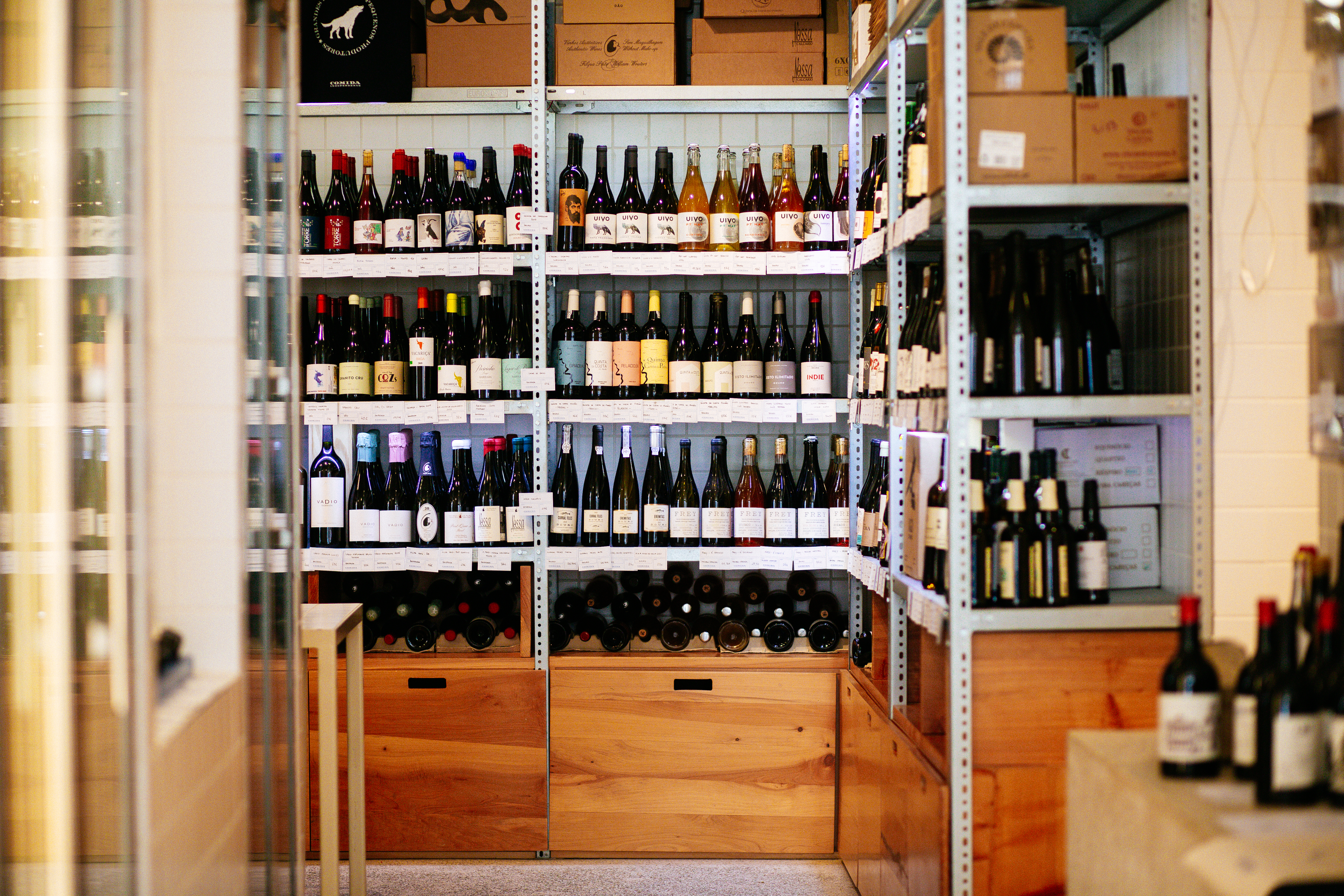 "We traveled the country to find the best producers." [Photo: Comida Independente
]
"We traveled the country to find the best producers." [Photo: Comida Independente
]If you’re staying in Lisbon for a while and want to step up your wine game, you may want to join the Alcateia Wine Club. Every month, the team selects a range of artisanal wines and delivers them to your home alongside the story of the producers. Alternatively, you can keep an eye out for their regular wine tastings and farmer’s market on Instagram.
10 - Explore Lisbon’s Up-and-Coming Neighborhoods
While it’s tempting to stay within Lisbon’s historic center, it’s worth venturing further east to explore the up-and-coming neighborhoods of Marvila and Beato. Hop on a train from Santa Apolónia or take one of the many buses heading to this side of town to see what’s on offer. What was once the seat of a handful of convents soon became the city’s industrial hub, but after the factories relocated or closed down in the 1980s, the two districts were slowly forgotten. That was until recently, when a new generation of creatives and entrepreneurs, lured by the low rents and vast warehouse spaces, took over the area.
Since then, Marvila has turned into a home for Lisbon’s iconic breweries like Musa and Dois Corvos, cultural spaces like Fábrica Braço da Prata, Underdogs Gallery and 8Marvila, which offer a regular schedule of performances and art exhibits, and a mushroom urban farm that repurposes coffee grounds. They even have one of Lisbon’s latest riverside kiosks, the Lamiré.
Meanwhile, in Beato, a former army factory is slowly transforming into a tech and innovation hub. More than a base for new startups, the Hub Criativo do Beato is also attracting locals with its vibrant food market, A Praça, where you can stock up on fresh produce and sample Portuguese comfort food. Or you can join a lively theatrical dinner at Palácio do Grilo, a restaurant set in an 18th-century palace. ||
